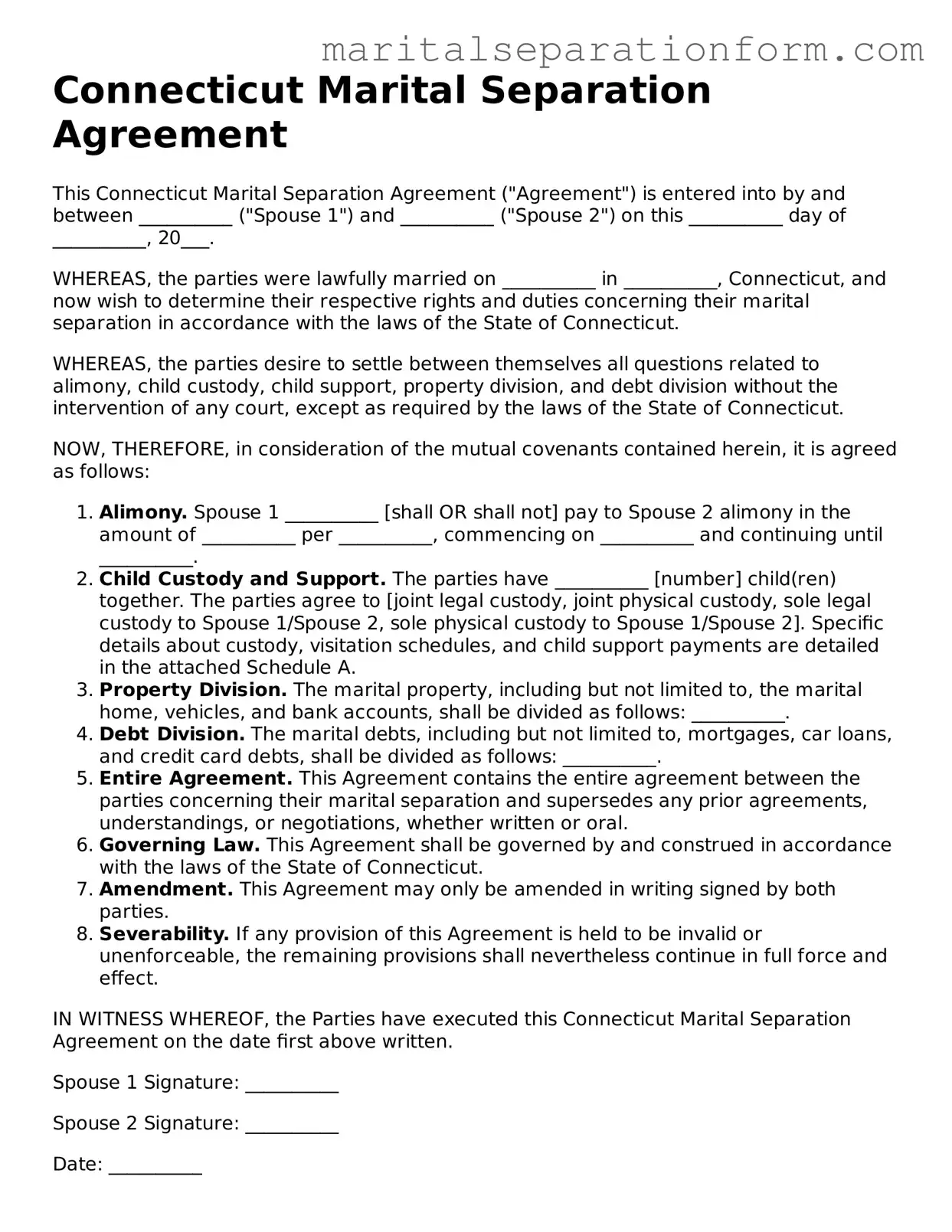What is a Connecticut Marital Separation Agreement?
A Connecticut Marital Separation Agreement is a legally binding document that outlines the terms and conditions agreed upon by a married couple who have decided to live apart but are not yet seeking a divorce. This agreement can cover a variety of topics, including but not limited to, property division, child custody, alimony, and debt division.
Who needs a Marital Separation Agreement in Connecticut?
Any married couple in Connecticut considering living apart, whether as a step towards reconciliation or divorce, should consider creating a Marital Separation Agreement. This document can help clarify expectations and responsibilities, making the separation process smoother and less stressful for both parties involved.
Is a Marital Separation Agreement legally enforceable in Connecticut?
Yes, once properly executed, a Marital Separation Agreement is legally enforceable in Connecticut. For it to be valid, it must be in writing, signed by both parties, and notarized. It's advisable to have a legal professional review the agreement to ensure it complies with Connecticut laws and court requirements.
Can the terms of the Marital Separation Agreement be modified?
Yes, the terms of the Marital Separation Agreement can be modified, but any changes must be agreed upon by both parties in writing and signed by both parties. In some cases, the court's approval may also be necessary, especially concerning matters related to child support or custody.
What happens if one party does not follow the Marital Separation Agreement?
If one party fails to adhere to the terms of the Marital Separation Agreement, the other party may file a petition with the court to enforce the agreement. Depending on the nature of the violation, the court may order compliance or impose penalties, such as fines or the payment of the other party’s legal fees.
Do we need to file our Marital Separation Agreement with the Connecticut court?
While it's not mandatory to file your Marital Separation Agreement with the court, doing so can provide legal certainty and make it easier to enforce the agreement should disputes arise. Filing your agreement also creates an official record of the terms agreed upon.
How does a Marital Separation Agreement affect the divorce process?
A Marital Separation Agreement can significantly streamline the divorce process if the couple decides to proceed with a divorce later on. The agreement can serve as a basis for the divorce decree, saving time, reducing disputes, and minimizing legal fees as much of the negotiation has already been done.
Is legal representation required to create a Marital Separation Agreement in Connecticut?
While legal representation is not required, consulting with an attorney is highly recommended. An attorney can provide valuable legal advice, ensure the agreement meets all legal requirements, and help protect your rights. Additionally, an attorney can facilitate negotiations and offer solutions that align with Connecticut laws.
Can child custody and support be included in the Marital Separation Agreement?
Yes, child custody and support can and should be included in a Marital Separation Agreement. These sections outline each parent's responsibilities and rights concerning their children, including living arrangements, visitation schedules, and financial support obligations, all in accordance with Connecticut’s child support guidelines and custody laws.
How long is a Marital Separation Agreement valid in Connecticut?
A Marital Separation Agreement is valid in Connecticut until the terms are fulfilled, it is modified by mutual consent, or until it is superseded by a court order, such as a divorce decree. If the couple reconciles, they may choose to nullify the agreement through mutual consent and a written document.
